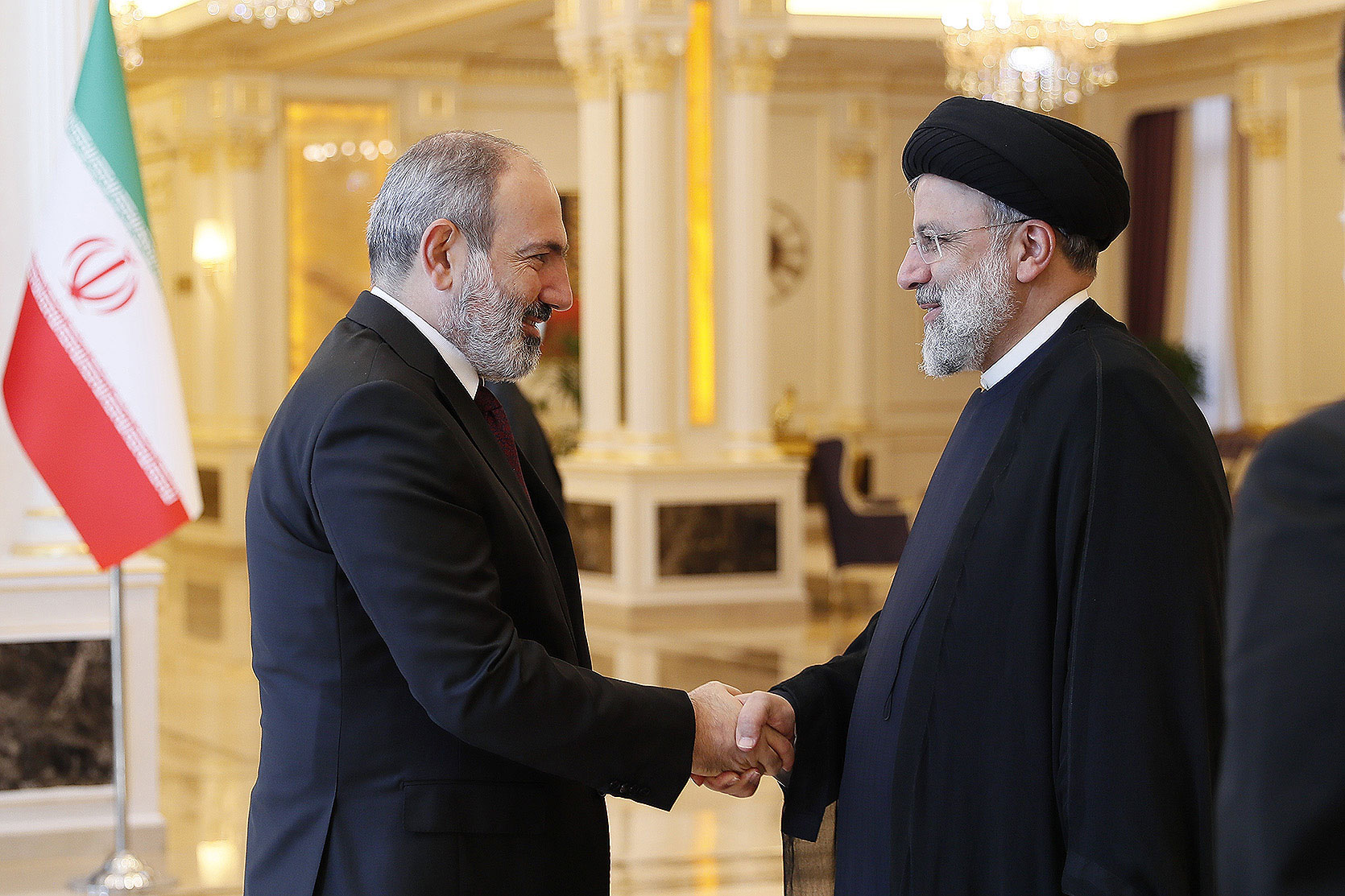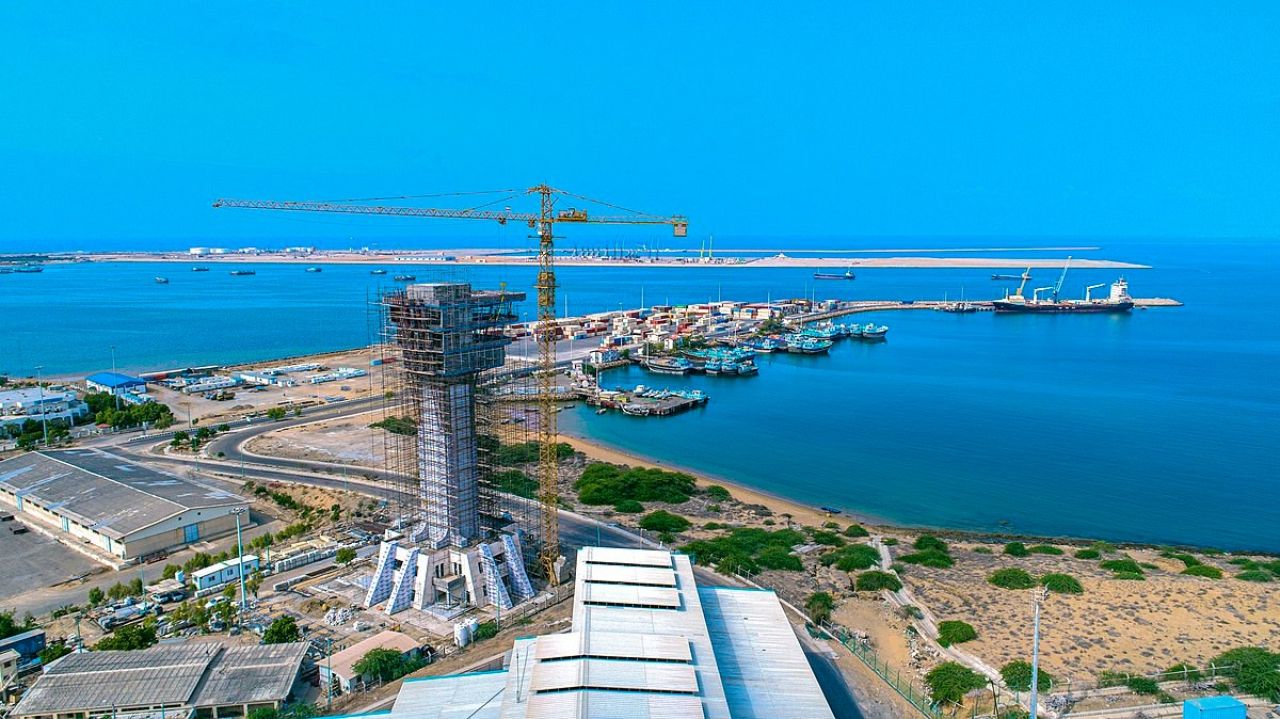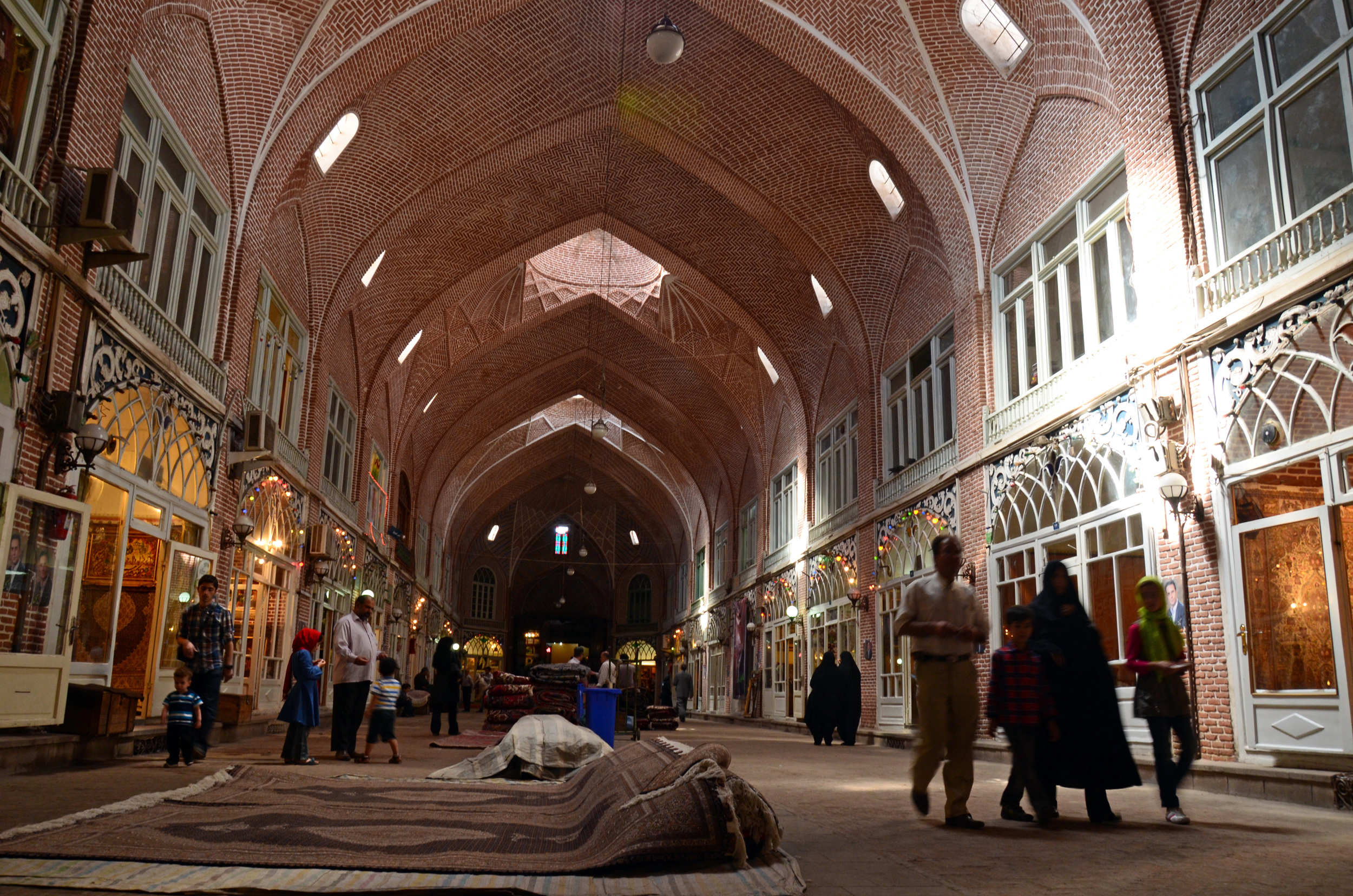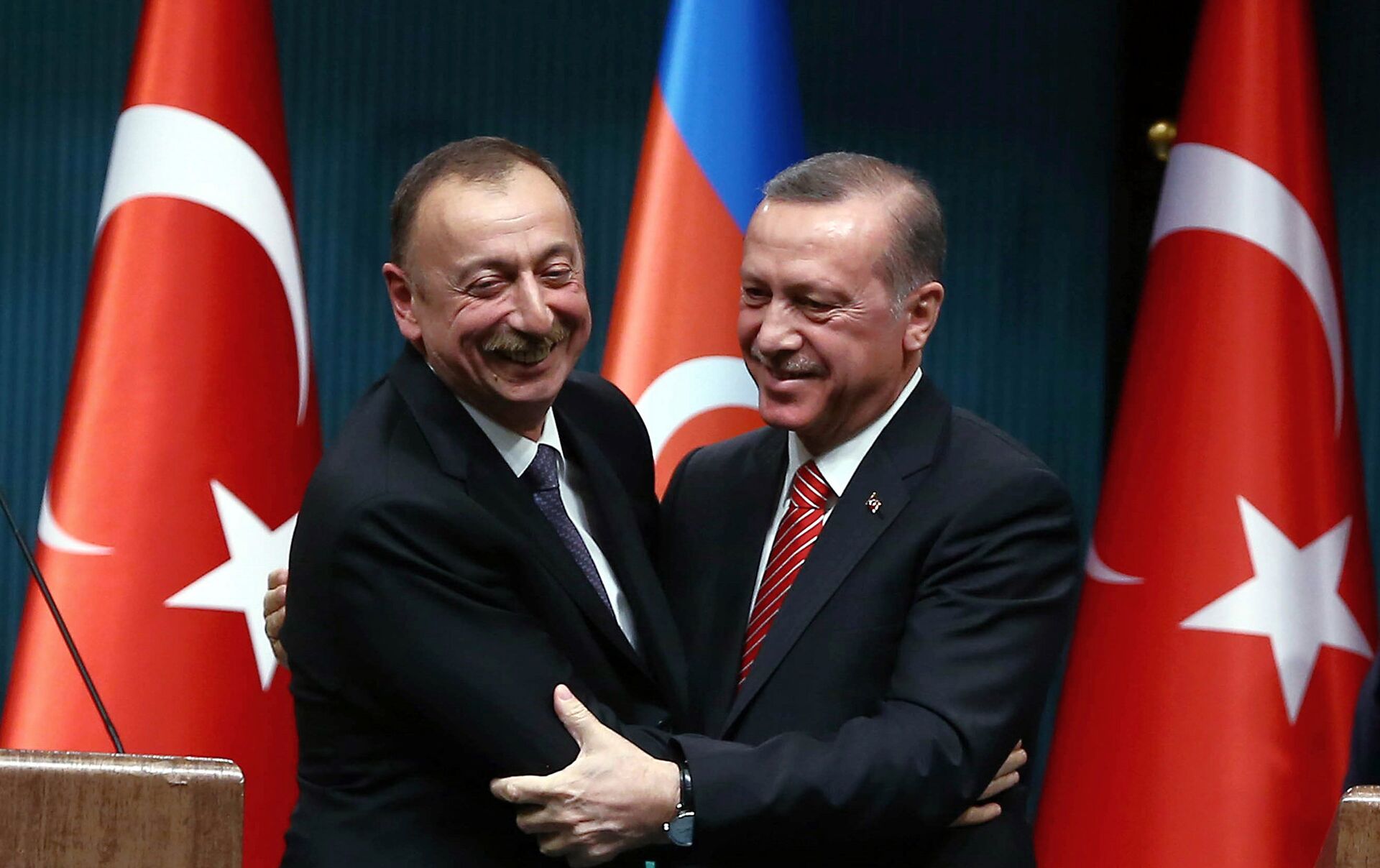Cooperation with Iran – a solution for Armenia, blockaded by Azerbaijan and Turkey
Armenia-Iran cooperation
A new international Iranian trade center has opened in Yerevan. At the opening ceremony, Iran’s Minister of Industry and Trade, Seyed Mohammad Atabak, stated that this is the largest such center in the world. Armenia’s Minister of Economy, Gevorg Papoyan, expressed hope that an Armenian trade center will soon open in Tehran.
Both ministers emphasized that the leaders of Armenia and Iran see potential and expect to increase trade to $3 billion. In this regard, Atabak expressed readiness to “make efforts to achieve this goal.” Papoyan added that to reach such an “ambitious goal, we must expand the range of products and improve logistical infrastructure.”
According to Armenia’s Statistical Committee, trade between Armenia and Iran in 2023 amounted to approximately $700 million. Exports accounted for about $100 million, with imports at $600 million.
For Armenia, trade relations with Iran are extremely important, as the other two neighboring countries—Turkey and Azerbaijan—closed their borders in the 1990s. Only the borders with Iran and Georgia remain open for Armenia.
Economist Armen Ktoyan believes that not only is Iran crucial to Armenia, but Armenia is also an important market for Iran. According to him, there is significant untapped potential in economic relations, especially in the energy sector.
“Iran has enormous resources, but its export markets are limited. So Armenia could become a promising outlet. Currently, Iran supplies one-sixth of our gas consumption. Meanwhile, the same Iranian pipeline could deliver five times more gas to Armenia,” Armen Ktoyan told JAMnews.
“Armenia – a gateway to Eurasian markets”
According to Iran’s Minister of Industry and Trade, the Iranian trade center in Armenia could open a new chapter in relations between the two countries and promote further economic cooperation. He also said that one of the Iranian government’s priorities is to develop trade and economic relations with neighboring countries, including Armenia:
“The level of political and economic relations between our countries allows us to view Armenia as a gateway to Eurasian economic markets. Iran, with its high-tech industry, knowledge-intensive products, geographical location, and access to maritime and rail transport, can contribute to the development of Armenia’s economy.”
“Armenia ready to become a transit link between the EAEU and Iran”
As Minister of Economy Gevorg Papoyan notes, Armenia is the only member country of the EAEU that shares a land border with Iran:
“This geographical and strategic advantage allows Armenia to play a key role not only in bilateral relations with Iran but also in ensuring the economic integration of Iran and the countries within the EAEU.”
The Eurasian Economic Union (EAEU) is an international organization for economic integration. Under Russia’s leadership, the union includes Belarus, Kazakhstan, and Kyrgyzstan. Armenia became a full member of the EAEU in January 2015.
Papoyan emphasizes that at a time when global trade is grappling with challenges—from geopolitical tensions to logistical disruptions—Armenia could become a unique hub that deepens ties within the Eurasian space. He added that the signing of a free trade agreement between Iran and the EAEU was a significant event, providing Yerevan with an opportunity to expand its export markets.
The Armenian minister affirmed that developing economic relations with Iran is a key element of Armenia’s economic policy.
He believes that strengthening Armenian-Iranian economic ties will contribute to the stable development not only of Armenia and Iran, but also of other countries in the region:
“Under our government’s ‘Crossroads of the World’ initiative, Armenia is ready to become a key transit link between the Eurasian Union and Iran, as well as between the West and the East.”
“Iran supports Armenia’s activities in the port of Chabahar”
Papoyan explains that under the “Crossroads of the World” project, Armenia intends to become a link that swiftly and reliably connects the Indian Ocean with the Black Sea:
“One of the key elements of this strategic project will be the opening of an Armenian representative office in the Iranian port of Chabahar. This will strengthen our trade ties not only with Iran but also with India. The route through Armenian territory will be crucial not only for Armenia but also for India, which is seeking to diversify its supply chains.”
Goods will be shipped from Mumbai in India to the port of Chabahar, then transported through Armenia to Georgian ports, and from there to Greece, Bulgaria, Romania, and other EU countries. This route will reduce logistics costs by 25 percent and significantly shorten delivery times—from 40 days to approximately 25 days.
Iran’s minister, Seyed Mohammad Atabak, stated that Tehran fully supports Yerevan on this issue:
“Moreover, the infrastructure of the Port of Chabahar is already ready. All EAEU countries will be able to participate and have representatives in this port.”
Commentary
According to economist Armen Ktoyan, Armenia and Iran could achieve a trade turnover of $3 billion in the long term. But this depends on several factors:
- Will the share of energy resources increase?
- Will the scope of the “Gas for Electricity” program expand? (Under this program, Iran provides gas in exchange for electricity from Armenia).
- Will Armenia be able to import more gas from Iran, receiving sufficient to match the pipeline’s capacity?
- Can Armenia, as a transit country, utilize certain opportunities, such as implementing preferential conditions provided by the Meghri Free Economic Zone?
In 2017, Armenia’s government established a free economic zone in the border area with Iran, in the city of Meghri, Syunik Province. This zone was created to address socio-economic issues in the region, attract foreign investment to Armenia, and strengthen economic ties with Iran.
The economist warns that there is a significant trade imbalance with Iran, which poses a challenge for Armenia’s economy, particularly in terms of import and export figures.
“The issue is not just how much we increase trade turnover, but whether this increase will come solely from imports. The key question is whether we can proportionally or gradually increase exports and produce goods that will be attractive to the Iranian market,” he explains.
Ktoyan notes that entering the Iranian market will require a complex and long-term effort from Armenia. First, a study should be conducted to determine which products might be in demand in Iran, and only then should concrete steps be taken:
“We need to modernize our economy, improve the processing industry, increase efficiency, and try to implement innovative solutions. This will allow us to reduce production costs and make our goods more competitive in regional markets, including Iran.”
He emphasizes that logistics also play a critical role in trade efficiency. The road connecting Iran and Armenia has limited capacity, challenging terrain, and is further complicated by adverse weather conditions. On top of that, it is expensive.
As a solution, Ktoyan suggests considering an alternative: the construction of the “North-South” highway.
The “North-South” highway is Armenia’s largest transport project since gaining independence. The road is intended to connect the northern part of the country with the south. In the north, it will link Armenia to Georgia, providing access to the Black Sea and European countries. In the south, the highway will connect Armenia with Iran. Construction began in 2012, but only a small section has been completed so far.
“The ‘North-South’ highway will improve the efficiency of the route, shorten travel distances, make them safer, and reduce costs. Interestingly, Iran has expressed willingness to finance certain sections of this road. Another alternative is the unblocking of regional transport rotes, but this is more of a geopolitical issue. It’s hard to predict what the outcome will be,” the expert said.
Ktoyan believes that Armenia could indeed become a transit link between Iran and the EAEU countries. However, he points out a significant problem—the lack of a direct land border with Russia:
“From this perspective, connecting Iran with the EAEU or Russia via the Caspian Sea or through the territories of Central Asian states could be more advantageous from a logistical standpoint.”
Commenting on the creation of an Armenian representative office in Iran’s Chabahar port, the expert noted that this would facilitate access to the Persian Gulf:
“This is a logistical hub that could significantly reduce organizational costs and save time. There is definite potential here. However, the weak link on our side is, once again, the roads in Syunik, their capacity, and the challenging terrain.”
Follow us – Twitter | Facebook | Instagram
Armenia-Iran cooperation























